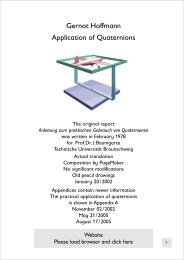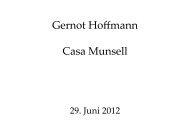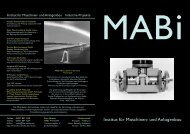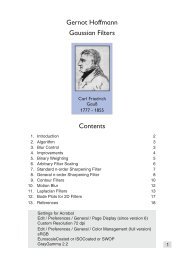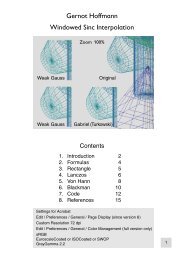Newton's Prism Experiment and Goethe's Objections
Newton's Prism Experiment and Goethe's Objections
Newton's Prism Experiment and Goethe's Objections
You also want an ePaper? Increase the reach of your titles
YUMPU automatically turns print PDFs into web optimized ePapers that Google loves.
17. Reverse problem <strong>and</strong> inverse appearance<br />
In September 2012 the author received a message by Dr.Stephen R.J.Williams, a UK-based<br />
Geo-scientist:<br />
The images in your chapter 12 seem to explain how the fringes are produced. My interpretation<br />
(see attached illustration) of your diagram indicates that observer will see blue<br />
fringes at top of aperture image <strong>and</strong> red/yellow fringes at bottom of aperture image.<br />
But when I look through a real prism I see blue fringes at the bottom of the aperture<br />
image <strong>and</strong> red/yellow fringes at the top. This is opposite to that in the diagram.<br />
Dr.Williams is right. Later he provided the link [26], which is of high value. But this report does<br />
not explain the problem in a convincing manner, does not explain what is called below the<br />
inverse appearance phenomenon.<br />
Not even Goethe himself had described the discrepancy between his drawing Fünfte Tafel in<br />
chapter 14 <strong>and</strong> his view through the prism. The drawing reproduces more or less Newton‘s<br />
approach (with some errors though, concerning the angles of refraction). It shows the color<br />
b<strong>and</strong>s on a screen, similar to all the other illustrations here in this document.<br />
Looking through a prism is in [26] called the reverse problem - exactly Goethe‘s approach, but<br />
not in his drawing. The inversion, as observed by Dr.Williams, is here called inverse appearance<br />
phenomenon.<br />
The explanation follows Dr.Williams‘ idea with minor modifications. At the left we have a black<br />
card board with a white rectangle, maybe like one of those which Goethe had used [27].<br />
One eye of the observer is shown at the right. We are interpreting two rays R 1 <strong>and</strong> R 2 . Ray R 1<br />
could be generated by a violet ray v 1 , a red ray r 1 or any other ray between (in modern nomenclature:<br />
orange, yellow, green, cyan, blue). Now we see that blue, cyan <strong>and</strong> green actually<br />
cannot be generated, because the card board is black at these positions. Therefore only red<br />
<strong>and</strong> yellow contributions remain <strong>and</strong> that is the color of the fringe. For ray R 2 the situation is<br />
similar, but violet, blue <strong>and</strong> cyan remain. Dr.Williams emphasizes that green hardly appears at<br />
edges, opposed to fully developed rainbow spectra for narrow apertures or rectangles. This<br />
can be confirmed by experiments using the Goethe Kit [27].<br />
Somewhat simplified: the top fringe is red/yellow, the bottom fringe blue/cyan. This is indeed<br />
an inverse appearance, compared to the projection of rays through a prism onto a screen, as<br />
simulated in chapter 12.<br />
r 2<br />
v1 r1 v2 21<br />
R 1<br />
R 2<br />
Eye



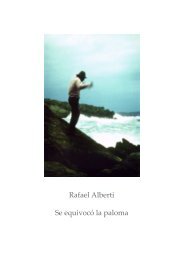
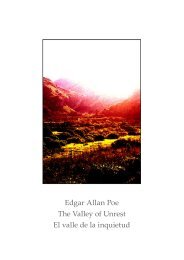

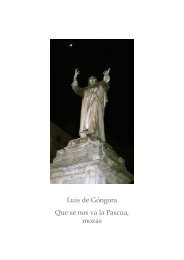
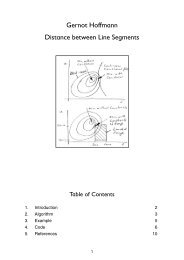
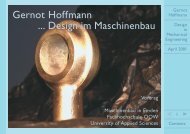
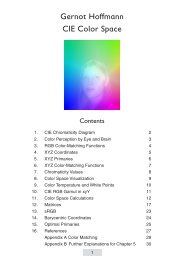
![[PDF] SpieleProgrammierung](https://img.yumpu.com/6860251/1/190x135/pdf-spieleprogrammierung.jpg?quality=85)
